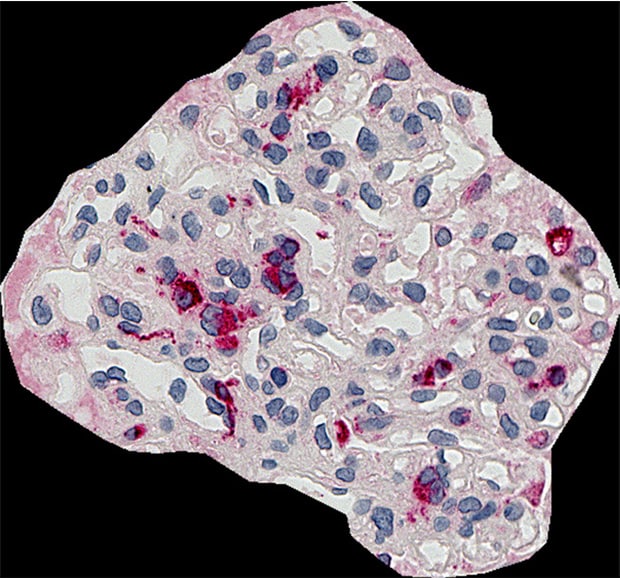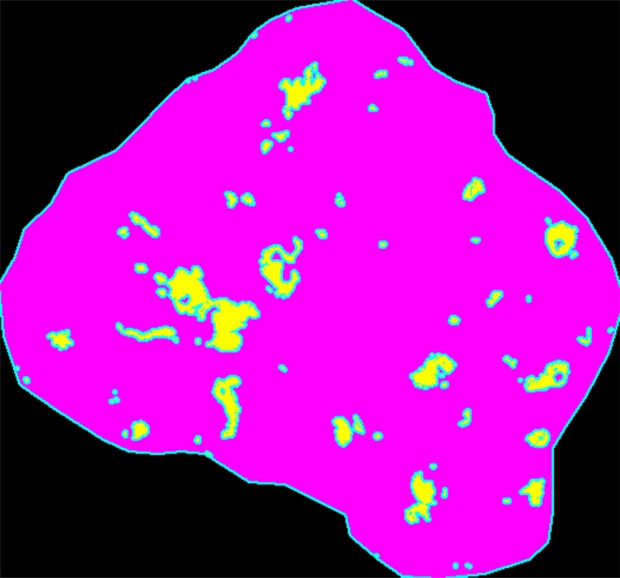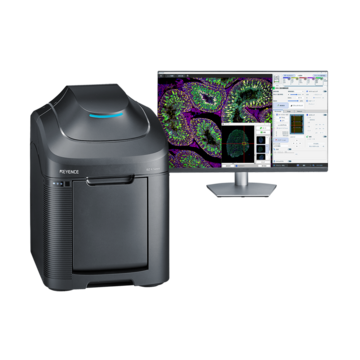Fluorescence Microscopes
Influence of CD68 (macrophage) on kidney tissue
CD68 (macrophage) permeation into the kidney glomerulus is a universal phenomenon seen in all progressive kidney diseases.
The glomerulus—a microscopic ball made of capillaries with small, open pores—governs the filtration function of the kidney. Approximately one million glomeruli exist in a single kidney. Macrophage permeation into the glomerulus leads to the phenomenon of fibrosis of kidney tissue.*
* What is fibrosis?
Fibrosis is the process in which connective tissue proliferates at an abnormal rate and replaces normal tissue. Specifically, in systemic sclerosis, an increase in the extracellular matrix of collagen fibers, and similar items within skin or internal organs, leads to their hardening. Fibrosis of the heart is a phenomenon in which an excess of extracellular collagen accumulates, leading to the hardening of the myocardium. This causes a decrease in the performance of the heart.
Get detailed information on our products by downloading our catalog.
View Catalog

Analysis example of CD68 (macrophage) glomerulus occupancy rate

An example of the analysis of CD68 (macrophage) glomerulus occupancy rate is shown below. After HE staining was performed, a bird’s eye view of a kidney biopsy was captured. Normally, it is difficult to focus the image when the sample is thick, but Z-stack image capturing enables microscopy in which the entirety of the image is in focus.

Glomerulus area: 23407 μm2

CD68 (macrophage) area: 998 μm2
Glomerulus occupancy rate: 4.3%
Using the All-in-One Fluorescence Microscope BZ-X
- Fully focused images even with thick samples.
- High-speed image stitching enables capturing of a bird’s eye view with high resolution.
- The thresholds can be set to fixed quantities automatically, which enables users to perform objective analysis.


